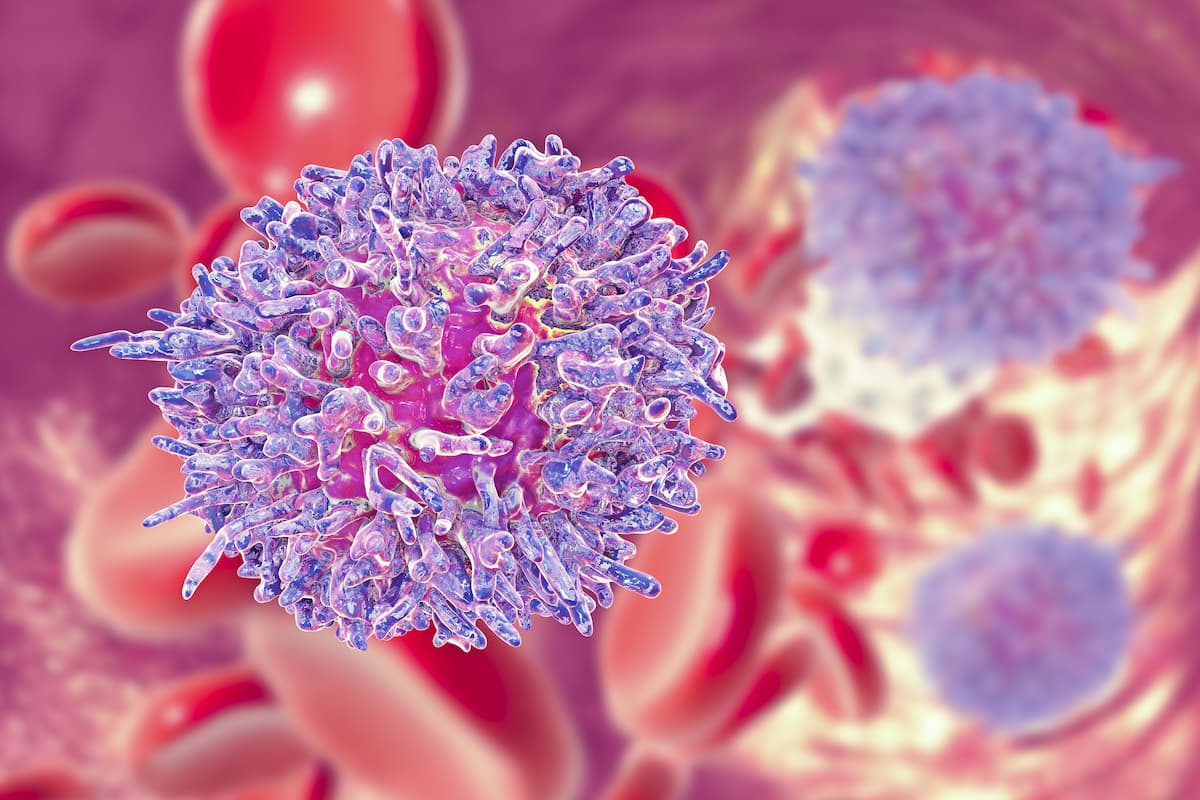Vitamin D May Prolong Survival Prior to First CLL Treatment
A watch-and-wait method was implemented when vitamin D was given prior to treatment for chronic lymphocytic leukemia.
"Our long-term retrospective study demonstrates that the administration of vitamin D to patients with CLL in a watch-and-wait active surveillance is significantly associated with a longer TFS [in any age] and a longer TTFT among young patients. A prospective clinical trial is needed to validate the results," according to the study authors.

A longer treatment-free survival (TFS) was reported when vitamin D was administered in a watch-and-wait approach to patients with chronic lymphocytic leukemia (CLL), according to findings from a study published in Blood Advances.
Patients who received vitamin D or its analog for at least 6 months and were 65 years or younger had a longer time to first treatment (TTFT), and for all ages, a longer TFS (P = .004). For patients who did not use vitamin D, the median TFS was 84 months vs 169 months for those who did.
A total of 3474 patients were included in the study, with 931 receiving vitamin D supplements or its analog for at least 6 months. Of these patients, 27% had previously been receiving vitamin D supplements during the watch-and-wait period, 845 received only vitamin D, 52 were given the analog, and 34 were given both. The study included data collected from January 1, 2000, to December 31, 2022.
The median follow-up was 1745 days.
The form of vitamin D that was most commonly given was D3 plus calcium, which was in a multivitamin. The median dose was 400 IU, and the median exposure was 28 months. Alfacalcidol, an analog of vitamin D, was also assessed at a median dose of 0.5 MCG and a median exposure of 14 months.
A multivariable Cox regression model assessed different time-dependent covariates between TFS and TTFT. These included age during diagnosis (HR, 1.013; P <.0001; HR, 0.974; P <.0001), sex with a higher proportion of males analyzed (HR, 1.697; P <.0001; HR, 1.236; P = .36), and osteoporosis (HR, 0.944; P <.0001; HR, 0.452; P = .0083).
Methods for defining vitamin D exposure were also assessed between TTFT and TFS. Different methods included cumulative vitamin D use (HR, 0.954; P = .651; HR, 0.922; P =.223), current vitamin D dose (HR, 1.00; P = .264; HR, .933; P = .179), current analog use (HR, 0.965; P = .266; HR, 0.71; P = .091), and current analog dose (HR, 0.968; P = .092; HR, 0.936; P = .056).
While vitamin D affected TTFT, it was not shown to be statistically significant (P = .077). At this point, the investigators created 2 subgroups of patients who were 65 years or younger and those older than 65. The younger cohort had statistically significant outcomes relating to vitamin D and TTFT (P = .038), but patients in the older cohort did not (P = .169).
In the older cohort, 32.9% of patients died without receiving any CLL treatment. Additionally, 8% died in the younger cohort before receiving treatment.
The analog was found to prolong TTFT and TFS, but these outcomes were not statistically significant (P = .124; P = .058). A subanalysis was conducted with 537 patients who did not have a comorbidity for osteoporosis, as the alfacalcidol analog is typically prescribed for. There was a statistically significant association between alfacalcidol and TFS (HR, 0.516; P = .02), but not TTFT (P = .069).
“Our long-term retrospective study demonstrates that the administration of vitamin D to patients with CLL in a watch-and-wait active surveillance is significantly associated with a longer TFS [in any age] and a longer TTFT among young patients. A prospective clinical trial is needed to validate the results,” Tamar Tadmor, MD, of Bnai Zion Medical Center, Technion, Haifa, Israel, and coauthors concluded.
Reference
Tadmor T, Melamed G, Alapi H, Gazit S, Patalon T, Rokach L. Vitamin D supplement for patients with early-stage chronic lymphocytic leukemia is associated with a longer time to first treatment. Blood Adv. 2024;8(14):3840-3846. doi:10.1182/bloodadvances.2023011458